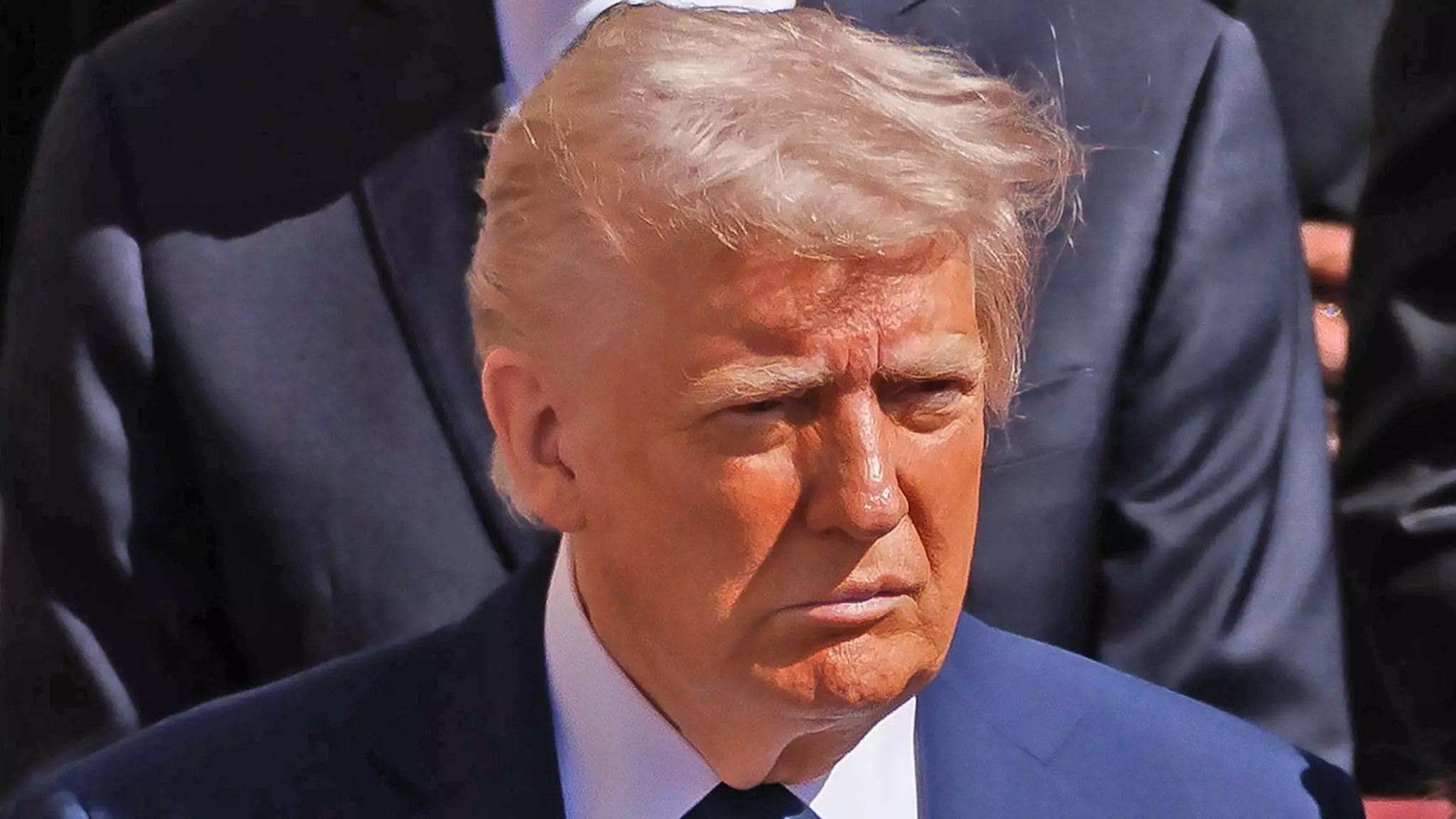The world of politics is often a juggling act of decorum and personal flair, especially when public figures step into sacred spaces. Such was the case at the funeral of Pope Francis, where President Donald Trump and First Lady Melania Trump drew significant attention—not due to their solemnity, but rather because of Trump’s conspicuously bright blue suit. This sartorial choice sparked a heated debate on social media regarding the appropriateness of dress code at such a high-profile event, overshadowing the gravity of the moment itself.
Attention to image has always been paramount for Trump, and yet in this instance, he managed to divert the focus away from his respect for the late pontiff and onto his eye-catching outfit. As cameras clicked in rapid succession, it became apparent that Trump’s bright blue suit was a glaring contrast to the somber black attire that dominated the audience. This moment raises the question: what sort of message was he intending to convey? Was it a defiance of tradition, or simply a lack of awareness of the event’s nuances?
The Message Behind the Attire
The Vatican reportedly requested that attendees wear black to honor Pope Francis, establishing an unspoken dress code that all in attendance were expected to adhere to. Trump’s bold color not only sets him apart visually, but it also seems to flout the very traditions upheld by the institution he was there to honor. Critics have drawn parallels between Trump’s clothing choice and earlier criticism directed at Ukrainian President Volodymyr Zelensky, who faced backlash for choosing not to wear a suit during an important meeting. Both instances highlight the double standards that exist in political attire—each representing different cultural sentiments—but Trump’s choice stood out drastically in the context of mourning.
The online uproar only intensified as voices on social media lambasted the President’s decision, labeling it inappropriate and disrespectful to both Pope Francis and the customs of the Catholic Church. It raises a significant discourse regarding the intersection of politics and respect within religious contexts. Critics argue that a leader should exemplify the gravity of such occasions, demonstrating an understanding of decorum that transcends personal ego or stylistic desires.
The Political Spin and Distraction
In the wake of the criticism, White House Communications Director Steven Cheung defended the President’s choice, suggesting that detractors should be ashamed for attempting to mischaracterize the situation. Such explanations only add layers to the spectacle: is this merely a misinterpretation by those criticizing Trump, or an intentional distraction meant to divert attention from other ongoing political issues? The nuanced debate over attire reflects broader dynamics at play, underscoring the unpredictable nature of modern political discourse.
Funerals should serve as unifying events, moments to come together in shared grief and remembrance. Yet, Trump’s fashion decision not only drew ire but also divided opinions, illustrating how easily a public figure can shift the narrative focus from reverence to ridicule. Whether one sees his attire as a symbol of defiance or simple ignorance, its effect was undeniable—a spotlight on individualism amidst a collective act of mourning, raising pivotal questions about the responsibilities that accompany political presence in such meaningful contexts.


Leave a Reply